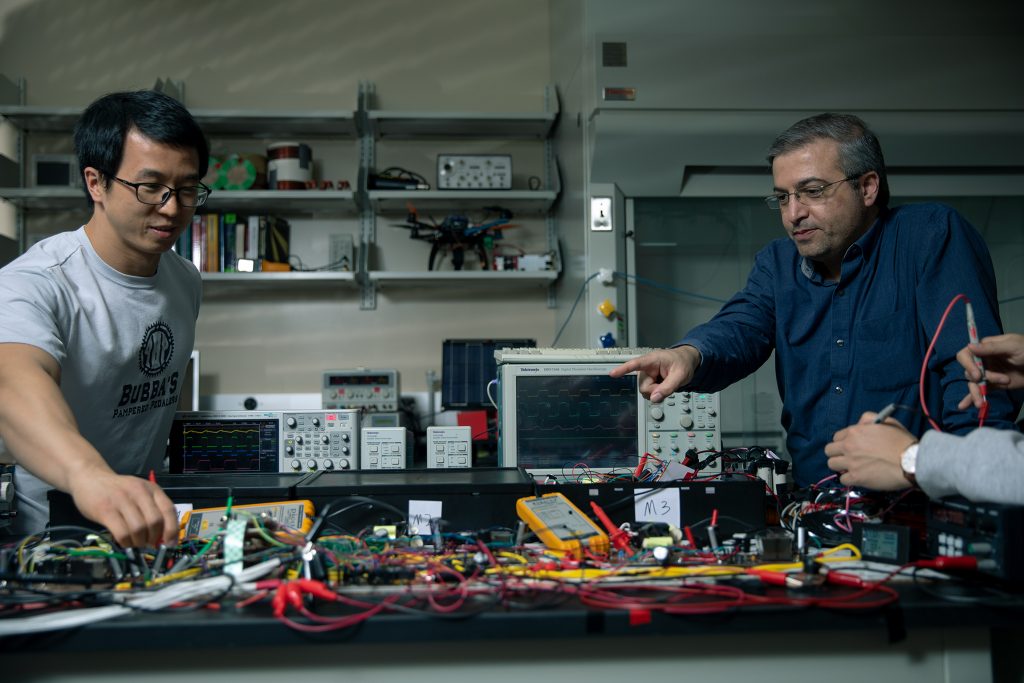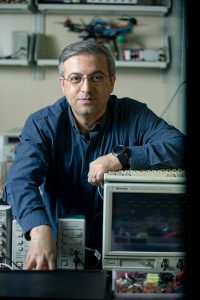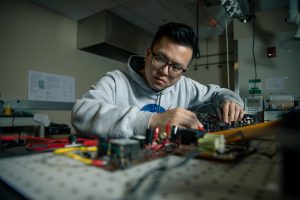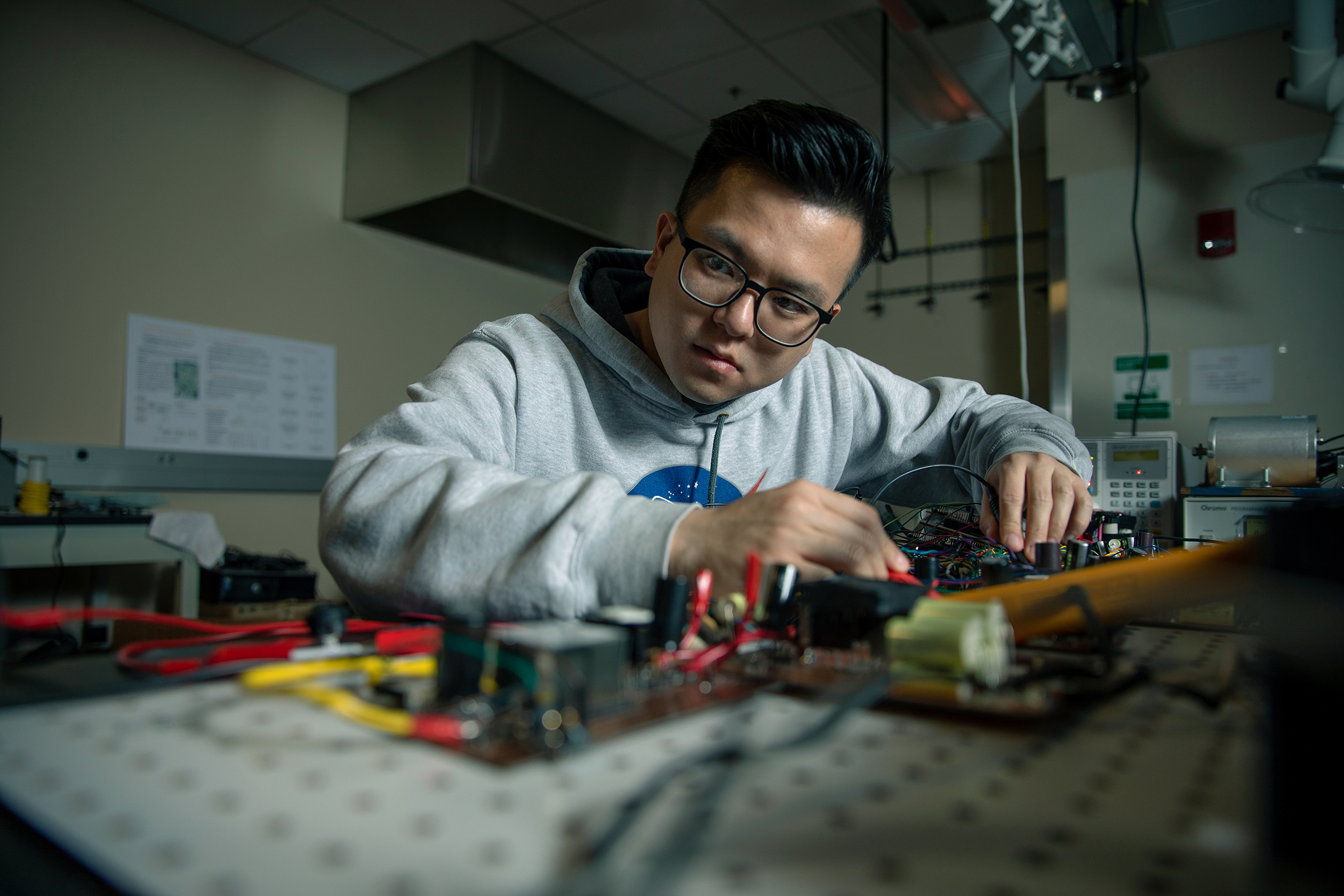
UA Engineers Developing Advanced Battery System for Solution to Electric Vehicle Range Anxiety
The nagging problem of electric vehicles comes from their need to store energy in batteries that do not let a car travel as far and take longer to recharge than a gas tank.
The challenges comes from both a mixture of the technical nature of batteries and the lagging infrastructure needed to charge vehicles quickly most anywhere.
Even though batteries are approaching equitable range with gas-powered cars, availability of charging stations is limited, causing range anxiety. A driver of an electric car needs to plan both time and route to ensure the car can be charged and recharged along the way so it doesn’t end up dead on the side of the road.
It’s a phenomenon rarely experienced driving a traditional car powered by a combustion engine, as filling up the tank takes minutes and gas stations dot roadways near and far.
A solution developed from research at The University of Alabama would give drivers of electric vehicles the confidence and freedom of a gas-powered vehicle, without the harmful emissions. It does not require yet-to-be-realized breakthroughs in batteries or a costly overhaul of the transportation system’s energy infrastructure.
Dr. Jaber A. Abu Qahouq, a UA electrical engineer, devised a system that draws power wirelessly from several portable battery modules that can interchange quickly and safely. These battery modules could be available at gas stations and stores to rent or buy in a way similar to propane tanks.
A driver could swap batteries without the expertise in electrical systems required to remove and install current batteries in electric vehicles. With no wires to connect, Abu Qahouq envisions the process as simple as filling a gas tank in a traditional car. To swap, simply slide the battery module in and out of the car.

“A regular person can handle these wireless battery modules without having to be trained,” Abu Qahouq said. “This concept offers availability and convenience, something no other solution can compete with.”
The car with the battery modules could also be charged by plugging into an electrical outlet like current electric vehicles.
The concepts needed to realize this technology have one patent with two others pending, and Abu Qahouq received funding from a grant through the National Science Foundation’s Small Business Technology Transfer, or STTR. The STTR Phase I grant supports more work on the technical aspects, market discovery for the idea and development of a lab prototype to prove the concept works.
“The experience our students are getting while working on this project extends to multiple skills and prepares them to contribute in industry after graduation,” he said.
Most electric cars can take an hour or more to fully charge, which provides a range of 100 to 200 miles, with a couple of high-end cars able to crest the 300-mile range. In comparison, a gasoline car takes less than 10 minutes to refill at the gas pump, and provides a range that can far exceed 300 miles, depending on the type of car and driving conditions.
Increasingly, electric cars come with batteries with more capacity size to increase the range, and now rapid charging stations are being installed that can cut time spent docked to the electric grid to less than an hour for a portion of the battery capacity.
However, more batteries increase the charging time and initial costs, and fast charging costs more while hurting a batteries long-term health – it’s efficiency, usable lifespan and safety.
Also, batteries are expensive, sometimes half the cost of the car. Some automakers offer a lease of the battery so a car owner can get a new battery when the original degrades. It is still a costly and time-consuming solution requiring trained technicians.
Abu Qahouq’s technology uses on-board electronics and a controller with the ability to pull power wirelessly from needed battery modules based on the power required by the motor and other subsystems. The wireless power transfer can be highly efficient when designed and controlled appropriately, especially with the minimal distance between the wireless battery modules and the receiving on-board unit.

“This is a system with several enabling technology concepts and controls behind it,” he said. “The controller is in charge of determining how much energy to draw from how many modules based on the electric motor needs.”
In fact, the car could use only as many of the battery modules as needed for a trip. For instance, if a car is used primarily in town, the owner might use and recharge, or exchange, only the necessary batteries for trips around town. However, if the owner wanted to travel longer, more battery modules could be placed in the car.
“With this concept, one is not dependent on the availability of charging outlets or stations infrastructure everywhere,” Abu Qahouq said. “Any store could be part of a distribution network for the wireless battery modules, and making these battery modules available would not require expensive infrastructure as charging stations do.”
The concept could also make electric vehicles less expensive. Perhaps the car’s owner buys only the battery modules needed for regular travel, but rents more for longer trips, returning them like a rented DVD from a kiosk to a nearby battery retailer when the trip is finished.
“When you buy the car, you don’t have to pay for a larger battery with higher capacity upfront to reduce your range anxiety,” Abu Qahouq said. “You can temporarily rent or buy more battery modules later when you need to drive longer distance, and this reduces the initial investment and cost when purchasing an electric vehicle and cost of long-term care could be less.”
The initial reactions from potential customers has been positive, and the next step is to complete a relatively low-power demonstration prototype with the main needed functions, he said.
“We want to bring this technology devised at The University of Alabama to the market so we can remove the worry and range anxiety, solve challenges such as charger availability shortage and long charging time, and reduce customer initial investment in order to increase the adoption rate of electric vehicles,” Abu Qahouq said.
Dr. Abu Qahouq is an associate professor of electrical and computer engineering.
